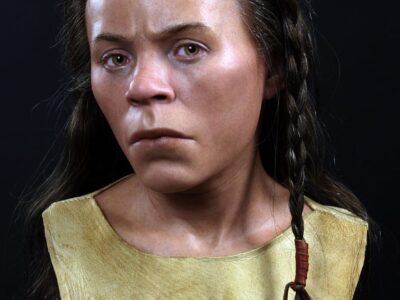Artificial intelligence has been deployed to study the Shroud of Turin as a point of reference to generate a highly detailed representation of the face of Jesus Christ.
The result is stunning.
If the Shroud of Turin is real, AI claims that Jesus looked like this. pic.twitter.com/b1cOCx4MiN
— Dr. Michael L. Brown (@DrMichaelLBrown) September 26, 2023
The Daily Star used Midjourney artificial intelligence to make the image.
Artificial Intelligence has used the Shroud of Turin, a Catholic relic, to show a lifelike depiction of what Jesus may have looked like, according to The Jerusalem Post.
The Shroud of Turin is a is a 14-foot linen cloth which bears the faint image of a man on the front and back and is considered a holy relic by members of the Catholic Church as many believe it to be the burial shroud used to wrap the body of Jesus of Nazareth after his crucifixion.
The image of the man upon the shroud is believed to be a miraculously imprinted image of Jesus and thanks thanks to AI like such Midjourney, technology can use the image to produce a lifelike depiction of Jesus.
The AI-generated image shows a man with long hair and a beard with his eyes open and looking directly outward. The top portion of his body is also visible and he is wearing what appears to be a simple tunic.
The Shroud of Turin is a mysterious and highly controversial religious relic believed by many to be the burial cloth of Jesus Christ. This ancient linen cloth bears the faint, negative image of a man who appears to have suffered wounds consistent with crucifixion, such as nail marks on the wrists and feet, as well as a spear wound in the side. It is housed in the Cathedral of Saint John the Baptist in Turin, Italy, and has been a subject of intense scrutiny and debate for centuries.
When the relic was first displayed 400 years ago, more than 25,000 people gathered at the Cathedral of St. John the Baptist in Turin to view it.
The origins of the Shroud remain a subject of speculation. Radiocarbon dating conducted in 1988 suggested that the cloth dated back to the Middle Ages, causing some to question its authenticity. However, this finding has been disputed, with arguments suggesting that the sample used for dating might have been contaminated over the years. Numerous scientific studies have examined the Shroud’s unique characteristics, but its true nature and the process by which the image was formed remain enigmatic.
For believers, the Shroud of Turin holds immense religious significance and is considered a tangible relic of Jesus Christ’s crucifixion and resurrection. Skeptics, on the other hand, view it as a medieval forgery or an elaborate hoax. Regardless of one’s stance, the Shroud continues to be a captivating artifact that fuels both faith and curiosity, making it one of the most studied and debated relics in the history of Christianity.
[Read More: Boy Can’t Believe What He Found In Grandma’s Yard]










Make into 3D copies & sell worldwide